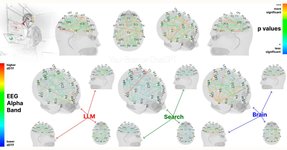
AI Outshines Humans in Creative Thinking - Neuroscience News

The model was helpful—but only to an extent. They found that while AI improved the output of less creative writers, it made little difference to the quality of the stories produced by writers who were already creative.
Rhiannon Williams • AI can make you more creative—but it has limits
ChatGPT's Impact On Our Brains According to an MIT Study
time.com
